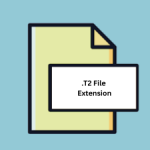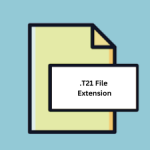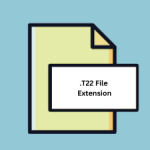.POST File Extension

LIGHT File
| Developer | Light of Creativity |
| Popularity | |
| Category | Data Files |
| Format | .POST |
| Cross Platform | Update Soon |
What is an POST file?
The ‘.POST file extension’ is primarily associated with LIGHT (Laser-Induced Grating Hydrodynamics and Tomography), a computational software tool used in scientific research and engineering disciplines.
These files contain data generated or processed within the LIGHT software environment, typically representing experimental results, simulations, or configurations.
More Information.
The development of the LIGHT software began in the early 21st century, driven by the need for advanced computational tools to model and understand laser-induced hydrodynamics.
Initially designed for academic research purposes, LIGHT quickly gained recognition for its robust capabilities in simulating and analyzing fluid dynamics under laser excitation.
As the software evolved, so did the ‘.POST file extension’, adapting to accommodate new features and data representations.
The primary purpose of the LIGHT file format is to store data related to laser-induced hydrodynamic experiments or simulations.
These files encapsulate critical information such as spatial distributions of various physical parameters, time-evolution data, and experimental settings, enabling researchers to revisit, analyze, and visualize results with precision.
Origin Of This File.
The LIGHT file format originates from the development efforts of scientists and engineers seeking to analyze and visualize complex hydrodynamic phenomena.
Its creation stems from the necessity to store and exchange data efficiently within the LIGHT software ecosystem, facilitating collaboration and further analysis.
File Structure Technical Specification.
The structure of a LIGHT file is defined by its technical specifications, which dictate the organization and encoding of data within the file.
While specific implementations may vary, a typical LIGHT file comprises several key components:
- Header Information: Contains metadata such as file version, creation date, and software settings.
- Data Arrays: Represent numerical data organized in multidimensional arrays, storing information about fluid properties, laser parameters, and spatial coordinates.
- Simulation Parameters: Includes settings and parameters used in the simulation or experiment, such as grid resolution, time step size, and laser characteristics.
- Optional Metadata: Additional information that aids in interpreting and contextualizing the data, such as experimental conditions, sample descriptions, or simulation methodologies.
The technical specifications of the LIGHT file format ensure compatibility and interoperability across different platforms and software versions, allowing researchers to exchange data seamlessly and reproduce results consistently.
How to Convert the File?
Converting LIGHT files to other formats may be necessary to integrate data with different software environments or to fulfill specific analysis requirements. Several approaches exist for converting LIGHT files, including:
- Built-in Export Functions: LIGHT software often provides built-in functions for exporting data to common formats such as CSV (Comma-Separated Values) or HDF5 (Hierarchical Data Format).
- Third-party Conversion Tools: Specialized conversion tools or scripts may be available to convert LIGHT files to other formats, either standalone or as part of larger data processing pipelines.
- Custom Scripts: Experienced users can develop custom scripts or programs to parse and convert LIGHT files to desired formats, offering flexibility and control over the conversion process.
When converting LIGHT files, it is essential to consider factors such as data integrity, compatibility, and preservation of metadata to ensure the fidelity and usefulness of the converted data.
Advantages And Disadvantages.
Advantages:
- Specialized Data Representation: LIGHT files are tailored to accommodate the specific requirements of laser-induced hydrodynamic simulations, ensuring efficient storage and retrieval of relevant data.
- Interoperability: The standardized format enables compatibility with various analysis and visualization tools, fostering collaboration and knowledge exchange within the scientific community.
- Compression: LIGHT files often employ compression techniques to reduce file size without compromising data integrity, optimizing storage and transmission efficiency.
- Metadata Support: The inclusion of metadata facilitates proper documentation and interpretation of experimental results, enhancing reproducibility and scientific rigor.
Disadvantages:
- Domain-Specific: The LIGHT file format is specialized for laser-induced hydrodynamics, limiting its utility outside of this domain.
- Complexity: Understanding and manipulating LIGHT files may require familiarity with the underlying physics and computational techniques, posing challenges for inexperienced users.
- Software Dependency: Accessing and interpreting LIGHT files typically requires compatible software tools such as LIGHT itself or third-party applications with support for the format.
How to Open POST?
Open In Windows
- LIGHT Software: Download and install the LIGHT software application from the official website or academic software repositories. Once installed, launch the application and use the ‘File’ menu to open the ‘.POST’ files.
- Third-party Visualization Software: Some third-party visualization software may offer support for ‘.POST’ files on Windows. Check the documentation or features list of the software to see if it supports this format.
Open In Linux
- LIGHT Software: Many Linux distributions offer packages or repositories containing the LIGHT software. Install it using your package manager, then launch the application and open the ‘.POST’ files through the interface.
- Command-line Tools: Depending on your needs, you can use command-line tools and scripts to process ‘.POST’ files on Linux. Utilize tools like Python with libraries such as NumPy and Matplotlib for custom data analysis and visualization.
Open In MAC
- LIGHT Software: Similar to Windows and Linux, macOS users can download and install the LIGHT software from the official website. After installation, open the application and use the ‘File’ menu to open ‘.POST’ files.
- Virtualization or Emulation: If no native macOS version of LIGHT is available, consider using virtualization or emulation software like VirtualBox or Wine to run the Windows version of LIGHT on your macOS system.
Open In Android
- Mobile Visualization Apps: Look for mobile visualization apps on the Google Play Store that support ‘.POST’ files. These apps are designed to open and visualize scientific data directly on your Android device.
- File Conversion: If no dedicated app is available, consider converting ‘.POST’ files to a more widely supported format like CSV or HDF5 using online or desktop conversion tools. Then, you can use compatible Android apps to open the converted files.
Open In IOS
- Mobile Visualization Apps: Explore the App Store for iOS apps designed for scientific visualization. Look for apps that support ‘.POST’ files or offer conversion options for compatibility.
- File Conversion: Convert ‘.POST’ files to a compatible format like CSV or HDF5 using desktop or online tools. Once converted, transfer the files to your iOS device and use compatible apps to open and visualize them.













